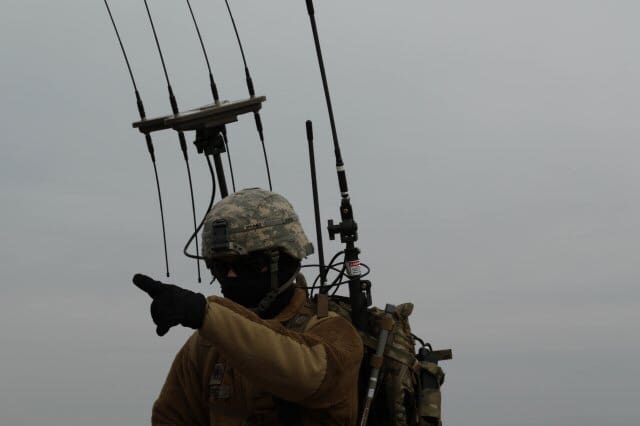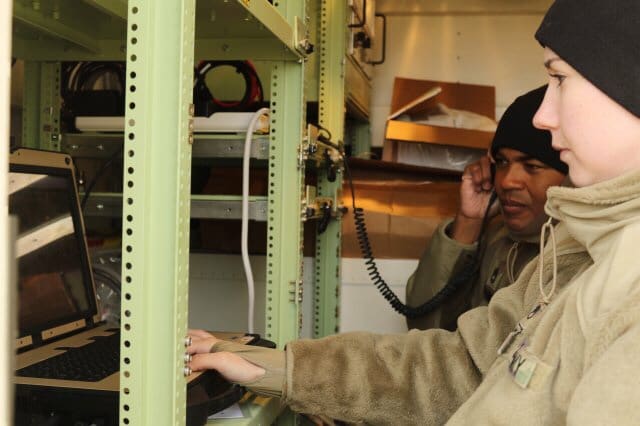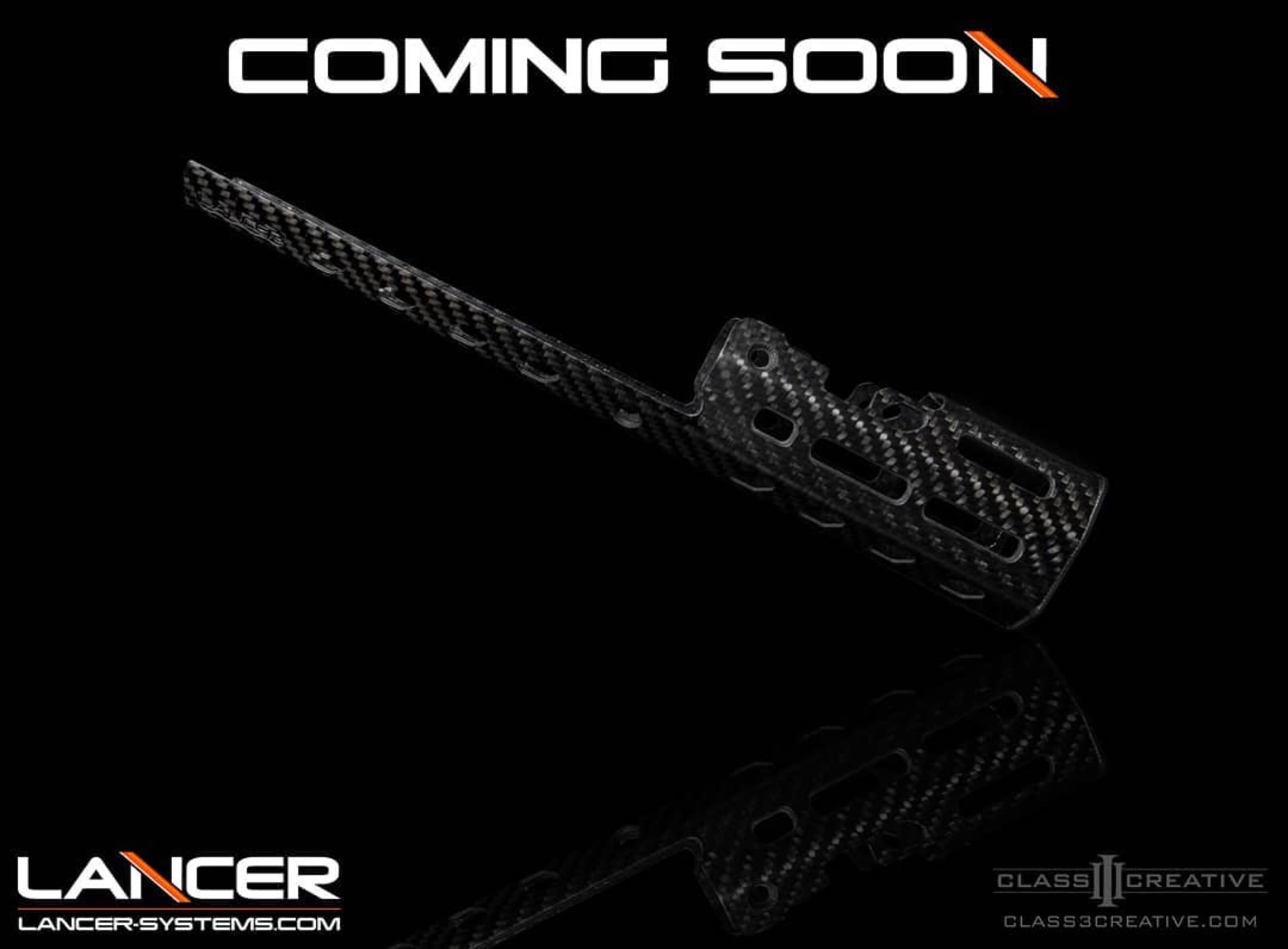This article discusses the fielding of EW Systems to the 1st Infantry Division. However, similar systems have also been fielded to the European-based 2nd Armored Cavalry Regiment and 173rd Airborne Brigade. In fact, those forward deployed systems have been used to conduct the first live Electronic Attack scenarios since the end of the Cold War.
FORT RILEY, Kan. — For today’s commander, having a clear picture of the battlefield is almost as much about understanding the electromagnetic spectrum as is it about reading a map.
To better equip and train brigades to compete against near-peer adversaries with sophisticated electronic warfare, or EW, capabilities, the U.S. Army recently delivered new EW prototypes to the 1st Brigade Combat Team, 1st Infantry Division ‘Devil’ Brigade, marking the first unit stateside to receive the systems after completing fielding to select Europe-based units in February.

Staff Sgt. Kristoffer Perez, Cyber Electromagnetic Activities section, 1st Armored Brigade Combat Team, 1st Infantry Division, points toward a nearby objective during the final day of training with his section’s new electronic warfare equipment at Fort Riley, Kan. The 1st Brigade Combat Team, 1st Infantry Division is the first unit stateside to receive the systems after completing fielding to select Europe-based units in February. (Photo Credit: U.S. Army photo by Sgt. Michael C. Roach, 19th Public Affairs Detachment)
The training in the United States prepares the units for future potential deployments where they will use the new technologies in theater, and helps spread updated electronic warfare technology, knowledge and tactics throughout the force.
“This is really driving us to answer the question, ‘how do we, as EW professionals, get better tactically?'” said Warrant Officer 1 Christopher Mizer, an electronic warfare technician with the 1st Brigade Combat Team, 1st Infantry Division. “Up until recently, the EW sections have been mostly planners on the brigade and battalion staffs, as well as the higher level. Now, our EW Soldiers can effectively move and maneuver and support the other warfighting functions with equipment on the ground, and that’s really driving us in how we train from here on out.”
This integrated package of EW capabilities, consisting of mounted, dismounted, and command and control systems for electronic sensing and jamming, were fielded to the 1st Brigade Combat Team, 1st Infantry Division at Fort Riley in March. In May and June, the unit’s electronic warfare officers, or EWOs, had a chance to use the equipment at the Army’s National Training Center at Fort Irwin, located in California’s Mojave Desert.

Sgt. 1st Class Gregory Robinson (left), Electronic Warfare noncommissioned officer in charge, 1st Armored Brigade Combat Team, 1st Infantry Division, works alongside Staff Sgt. Susan Bradbury, Electronic Warfare noncommissioned officer, 1st Armored Brigade Combat Team, during the final day of training with their new electronic warfare equipment at Fort Riley, Kan. in April 2018. (Photo Credit: U.S. Army photo by Sgt. Michael C. Roach, 19th Public Affairs Detachment)
Yet instead of working alongside the rest of their brigade at the NTC, which will come later this year, the EW Soldiers of the 1st Brigade Combat Team, 1st Infantry Division were at the NTC to participate as part of the Opposing Force, or OPFOR. The EWOs were able to push the equipment during operational scenarios by electronically locating the “blue” or friendly forces on the battlefield, passing that information to the OPFOR commander and even applying some jamming effects against the friendly forces.
“This was our initial test of the equipment away from home station in a realistic operational environment,” said Sgt. 1st Class Gregory Robinson, electronic warfare non-commissioned officer in charge with the 1st Brigade Combat Team, 1st Infantry Division. “When our brigade goes to the NTC later this year we’ll be able to integrate the equipment within our organic brigade, using the equipment in the same environment but this time against the OPFOR.”
The systems are prototypes that serve as an interim solution until the Army’s enduring EW programs of record can be fielded. Together, they provide electronic protection, as well as the ability to detect and understand enemy activity in the electromagnetic spectrum, and disrupt adversaries through electronic attack effects.
“Recognizing this is a prototype system, it is still a step in the right direction,” Mizer said. “We haven’t had a system within the electronic warfare community that looks at the electromagnetic spectrum and forces Soldiers to think through what they are seeing, how that affects their commander’s mission, and how they can affect the spectrum to enable the commander.”
The Army Rapid Capabilities Office and Project Manager EW & Cyber developed and delivered the prototypes in response to an Operational Needs Statement from U.S. Army Europe. The 1st Brigade Combat Team, 1st Infantry Division is the first brigade to receive the equipment and train with it in the continental United States. Units in Europe, including the 2nd Cavalry Regiment, 173rd Airborne Brigade and 2nd Armored Brigade, 1st Infantry Division were provided the equipment and have also used it operationally in exercises this spring, including Saber Strike and the Joint Warfighting Assessment.
Together these units in Europe, and now the 1st Brigade Combat Team, 1st Infantry Division, are adapting electronic warfare techniques for the brigade and below and providing valuable feedback on how to employ or “fight” the systems on the battlefield. The prototype fielding and training has also provided a chance for the different units to examine how to task organize cyber and electronic warfare personnel as they integrate the systems within their formations.
“If we did nothing electronic warfare-wise until we actually field a program of record EW system, we would be significantly farther behind,” Mizer said. “We wouldn’t know how to integrate them, operate them, maintain them or fight those systems when we get them. This is really informing that process. It’s forcing our EW Soldiers to look at the intellectual problem of determining how you fight an EW system. That’s something the Army hasn’t really done in almost three decades.”
That input is helping to feed information back into the enduring solutions. This approach, where the RCO worked with the program of record developer PM EW&C to adapt existing systems and incorporate emerging technologies to provide new EW effects and meet an emerging threat, enabled the Army to rapidly move an interim solution to the field in 12 months. The Army will continue this phased fielding approach, which incrementally builds EW capability through direct Soldier input and as new technologies are made available.
At the NTC, for example, the 1st Brigade Combat Team, 1st Infantry Division Soldiers were able to work directly with equipment developers on improvements to the systems, some of which could be incorporated over the next several months.
“We were able to work with the engineers and identify items that needed to be fixed,” Robinson said. “We expect some improvements shortly before we take the equipment back to our brigade’s rotation at the NTC later this year. We did point out that the systems need a more user-friendly interface and improvements are needed with the integration between the mounted and dismounted systems so we can get better end results from the information we’re receiving.”
By Nancy Jones-Bonbrest, U.S. Army






















































































































